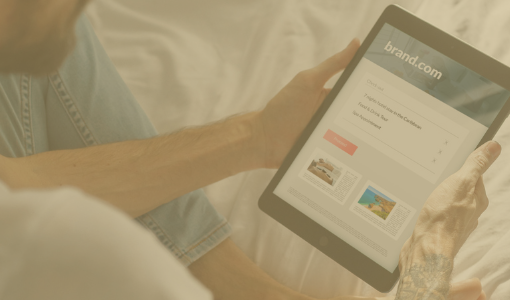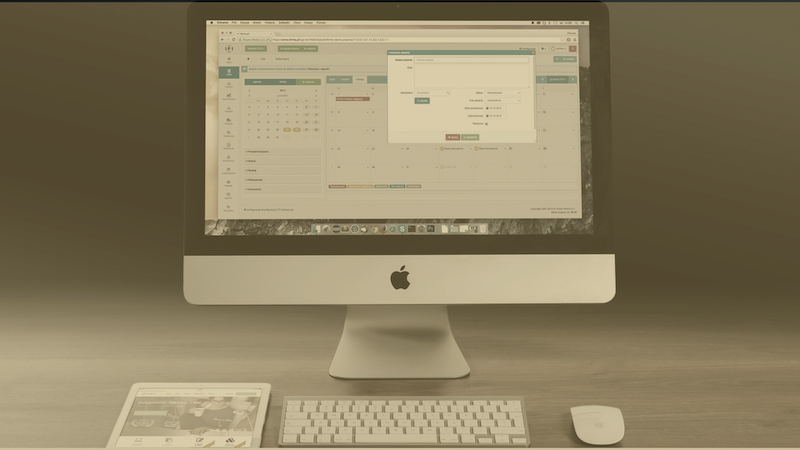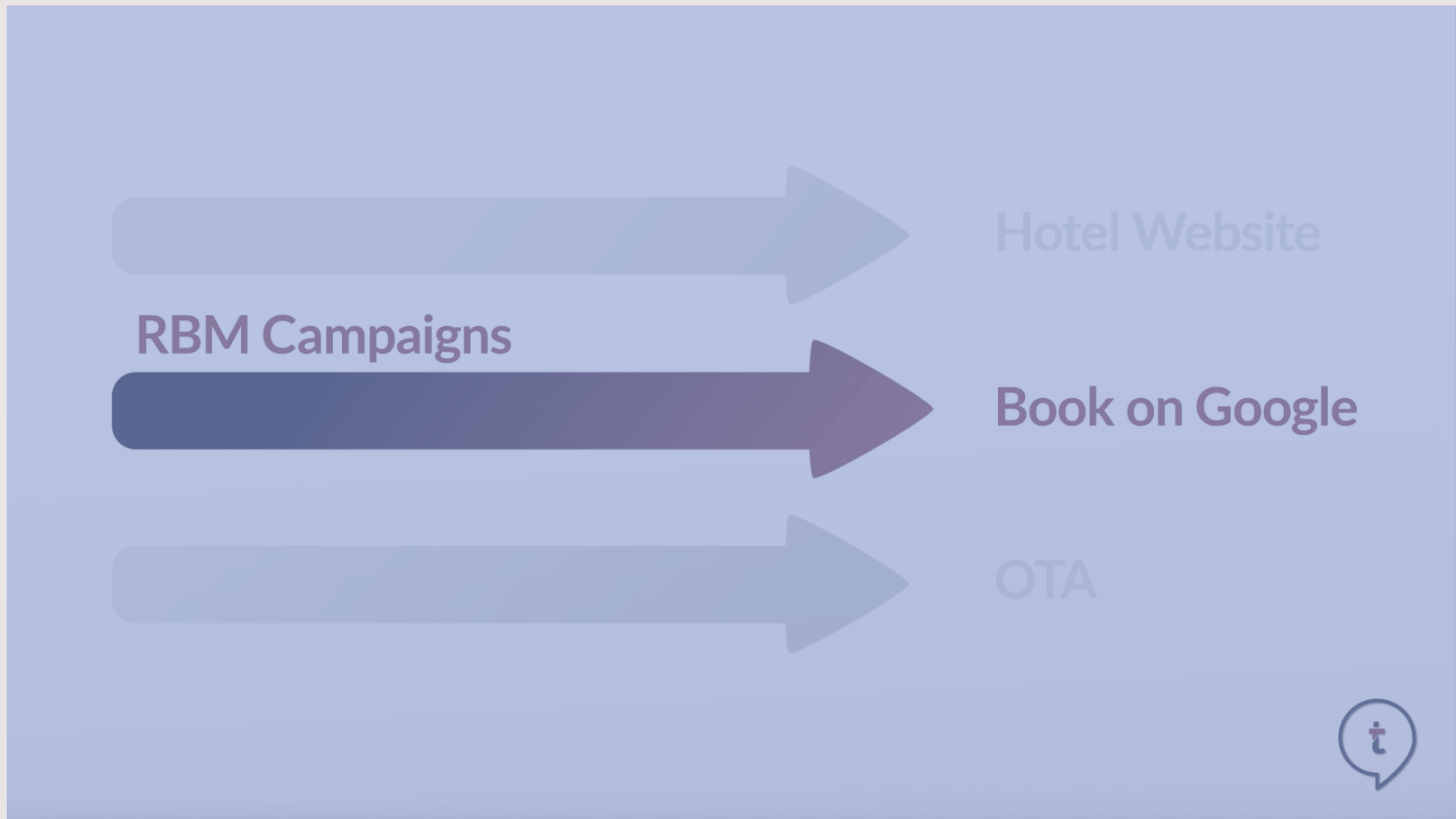Package.
A word that can mean many things in the travel industry. Maybe for the online shopper, you first think of UPS or Amazon. Or if you work on property, a dining, parking, or spa package is included with the room rate. Then there is the traveller's point of view, where a package combines several different travel items like air and hotel or hotel and attraction. With this many definitions, it is no wonder we don't have a universal solution for managing and booking packages.
Definition of Dynamic Packaging
I've asked our friends at techtalk.travel to provide a summary of Dynamic Packaging and Bundling.
The term "dynamic packaging" is often misused to describe the less sophisticated process of interchanging various travel components within a package; however, this practice is best described as "dynamic bundling." Actual dynamic packaging requires the automated recombination of travel components based on the inclusion of rules that dictate the content of the package and conditional pricing rules based on various conditions such as the trip characteristics, suppliers contributing components, the channel of distribution, and terms of sale.
Dynamic packaging is used in package holiday bookings to enable consumers to build their own package of flights, accommodation, and car rental instead of purchasing a pre-defined package. Dynamic packages differ from traditional package tours. The pricing is always based on current availability, escorted group tours are rarely included, and trip-specific add-ons such as airport parking and show tickets are often available. Dynamic packages are similar in that often, the air, hotel, and car rates are available only as part of a package or only from a specific seller.
Dynamic packaging is dynamic on a few levels.
Firstly, inventory is sourced dynamically, meaning the dynamic packaging solution sources flights, accommodation and car rental components for the package in real-time. Secondly, these components are dynamically combined into packages. Thirdly, the package is dynamically priced and usually has an opaque total price.
Thanks techtalk.travel!
As for hotels, depending on the demand, the hotel's assets and strategy, the location, and the popular activities in the location, a hotel can create made-to-measure modules as an added value to their guests' stay.
Examples for packages in hotels are spa-package, city-tour, harbor cruise, romantic escape, family-deal, culinary-experience, wine-tasting, corporate package, etc.
Let's consider the keeper of the keys; hotels. As a hotelier, longer length of stay, in turn, results in more spending on the property. This we all know. But the question is, really, how do we accomplish this with no increase in labor or high margins?
Let's drill down deeper into the hotel's perspective. Brand.com will always be the preferred method for guests to use when making their reservations. As an industry, we spend millions of dollars researching the buying patterns and triggers that convert the booking on the CRS, looking at conversation and upsell opportunities. During my tenure at TravelClick, I recall countless hours with our conversion teams focused on consumer behavior. We were always puzzled at the question of getting the right product to the right consumer at the right time, all without overwhelming them. Lots of rights that can all still go wrong.
One of the critical factors is that a consumer wants the Best Price Guarantee. Over the last ten years, global hotel chains have taken an aggressive approach to managing "Best Rate Guaranteed" (BRG) claims, with much success resulting in higher confidence booking on their respective brand.com. However, for a customer wanting to book directly on brand.com to ensure BRG, loyalty points and benefits, a package that includes additional travel components like air, tours and car rental, the customer is unable to complete all of this efficiently in one pretty, wrapped, bowed and ribbon curled box.
To date, there are only two options for a hotel to add air/car components on their brand.com:
- An out of the box white label solution, from an Online Travel Agency (OTA) that adds air/car pricing to be combined with direct room rates from an OTA.
- Offer aggressive, opaque, discounted pricing through a third party such as Expedia or Booking.com, which has the benefit of hands-off, high production but carries the added disadvantage of transacting off brand.com. Meaning, no opportunities to upsell room types or any potential ancillary products or gain detailed guest information before check-in.An out of the box white label solution, from an Online Travel Agency (OTA) that adds air/car pricing to be combined with direct room rates from an OTA.
Many global hotel chains have leveraged the breadth and technology of OTA's to power their dynamic packing on their brand.com website. In speaking with several large hotel groups, we know that the (brand.com) direct site integration of dynamic packaging sales pales compared to the conversion they see through those OTA's direct package sales. Boiled down, adding an OTA's air/car to your brand.com produces poorly vs. offering high discounted offerings directly to that OTA.

All we've done so far is lay out the long list of questions about the complexity of hotels actively managing a packaging strategy for leisure business. Can we get to a solution?
The missing piece is the consideration of the current generation of travelers and their need for options. Consider that we live in a world where we can go to a supermarket and purchase groceries, clothing, TVs, and a BBQ grill. We are overwhelmed with options, but they aren't always the right ones at the right time. Not only is it about endless possibilities, but generations are also spending differently.
According to Luggage Hero :
- 13% of Gen X's budget goes to tours or different tourist attractions
- 25% of Gen Z's budget is spent on flights
- 33% of Millennials would spend $5,000 or more on their vacations
- 81% of Gen Z said their budget is a substantial issue when deciding on bookings
Considering these stats, the idea of being on multiple shelves is more accurate than ever.
Ideation
What does an ideal solution look like for you? For your children? For your extended family? Ask questions of those around you and find out how they book and what they are looking for when booking all travel components. Maybe survey your existing customers to determine if they use miles/points, rewards, gift certificates, direct booking, etc.
Preparations
Next, communicate your vision and identify what you want from dynamic packaging (e.g., increased direct bookings). This will help your software partners provide accurate estimations on timelines and source and qualify the data needed for personalized packaging.
Integrations
Ensuring inventory sources for your packages will require additional integrations for supporting dynamic packaging. Sources, you can choose from car rentals, airlines, and recreation options such as Concerts, Golfing, or Spa bookings. Be sure to ask your existing software providers if they have any widgets or plug-in integrations available that you may not be leveraging.
Implementation
Working with a solution provider that can implement dynamic packaging on top of your existing booking engine would be the ideal, if not only option. Your booking engine will need to support connectivity with external Application Programming Interfaces (APIs) from third-party inventory suppliers, including a Customer Relationship Management (CRM) and payment systems.
Developing a dynamic packaging solution involves finding solutions to many challenges. The first is the limited range of APIs needed for integrations. APIs are now available for hotel operating systems, flights, and vehicle rentals; however, they're limited for other services such as restaurant or activity reservations.
Data Analysis
When facilitating the needed elements for dynamic packaging such as flights, accommodation, rentals, and activities, it is vital to analyze the bookers' specific preferences then process and store that data into a CRM system. That central information hub will ensure that suitable offerings drive the most value.
Machine Learning
Machine learning in hospitality can help break down historical data (e.g., items travelers previously booked), filling dynamic packages with tailored offerings used to offer unique offerings.
From a financial standpoint, machine learning in today's climate should be embraced by hotels to maximize the sale opportunity with every booking. Embedding this technology into a revenue management module is essential to predict travel behaviors in low and high seasons. It also facilitates dynamic pricing, which is the heart of a dynamic packaging solution.
Privacy
Data privacy needs to be paid close attention to with dynamic packaging. It's essential to be conscious of this fact when collecting user data and analyzing it for needed personalization. Therefore, the offering you provide to bookers needs to ensure the process involves privacy-focused techniques guaranteeing customers' personal information is protected at all times.
Disruptive Technology Opportunities in Dynamic Packaging
Newer solutions such as the Hopper app actively encourage customers to wait before booking. This 'waiting' concept was unheard of several years ago and speaks to travelers' confidence in a brand like Hopper. Other companies like Pollen offer younger travelers the opportunity to pay by the month for exclusive access to rooms and events. Since hotel technology has not yet answered the riddle of dynamic room block management, Pollen is forced to manage by rooming lists. Lastly, consider the advancement in the payment space/FinTech, purchasing a vacation after you return from your trip. Uplift, Affirm, and even Klarna (who is integrated with Expedia) encourage travelers to purchase a vacation the same way we buy a couch. Monthly payments at a low Annual Percentage Rate (APR) upon return from your vacation.
These disruptive technologies have found new and innovative ways to take a problem and fix it. Maybe there is also an easy solution for the dynamic packaging market that we haven't even considered yet.
So, I leave it up to the startups and entrepreneurs out there to create a solution that allows hotels flexibility and control at a low cost. That might sound like trying to find one of the five Golden Tickets to Willy Wonka, but five years ago, we didn't believe there was a substantial market for selling luxury hotels by the hour.
About the Author
Natalie Kimball, Vice President of Strategic Account Management for Distribution Solutions at Shiji Group

-
Natalie's primary role is developing existing partnerships with Shiji's Switch and image asset, IcePortal. Her first role in the industry, over 20 years ago, was managing the Southern California market at Travelscape, which became the Expedia Merchant Model. She has built a successful career in the hospitality technology industry, including managing FIT, Tour, and Wholesale accounts at a 3,4, and 5-star hotel group in San Diego, working at two switch companies and for two of the largest OTAs; Orbitz and Expedia.
Natalie brings knowledge, leadership, and passion into all her roles. She is currently a board member of HEDNA (Hotel Electronic Distribution Network Association).
Connect with Natalie Kimball on Linkedin.
Shiji Group is a Founding Member at techtalk.travel.
Also, make sure to find these supporting Editorial Elements on Leisure Distribution Technology & Dynamic Packaging
- VIDEO l Leisure Distribution Technology & Dynamic Packaging
- PODCAST l Leisure Distribution Technology & Dynamic Packaging.
- INFOGRAPHIC l Dynamic Packaging Solution for Hotels
EXPLORE FURTHER. Related techtalk.travel editorials
- Editorial l Modern Demand Generation
- Editorial l Internet Booking Engine (IBE) & Direct Distribution
In relation to leisure hotel distribution, you might find interesting also:
- Interview, HSMA e & MICE Day 2021: The future of leisure distribution and packaged travel l Carmen Rieskamp, Upstalsboom Hotels & UPtours




 Free download
Free download

![V03: The History of Hotel & Travel Technology | [Updated] Infographic](https://www.techtalk.travel/storage/app/uploads/public/63f/e6f/ec8/63fe6fec80447817849943.jpg)



Create an account to access the content.
Get access to Articles, Video's, Podcasts, Think Tanks, Infographics and more.
Click “Sign In” to accept our
Terms of Service Privacy Policy